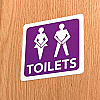Timely CPR doubles odds of surviving cardiac arrest
Training the public how to do CPR saves the lives of people struck by cardiac arrest outside of a hospital, according to a study in The New England Journal of Medicine. The survival boost was markedly higher for men who experienced cardiac arrest outside the home.
In the United States, 420,000 people per year experience cardiac arrest outside of hospitals. It seems like a no-brainer that cardiopulmonary resuscitation (CPR) saves lives, but hard evidence has been lacking on exactly how many lives are saved. To help clarify the issue, researchers in Sweden analyzed more than 30,000 out-of-hospital cardiac arrests that occurred from 1990 to 2011. It's a good country to test CPR's power, since a third of the Swedish population knows how to do it.
In people who received bystander CPR before emergency workers arrived, the 30-day survival rate was 10.5%, compared with only 4% in people who did not get bystander CPR. Even after adjustments for factors that influence survival after a cardiac arrest, starting CPR on a person before medical help arrived more than doubled the odds of that person surviving.
CPR keeps blood flowing to the brain until the heart can be restarted. Research suggests that the sooner that someone starts CPR after a person collapses, the more likely the victim is to survive. If you want to learn CPR, call your local Red Cross or American Heart Association office or go to the Red Cross training website at www.redcross.org/take-a-class.
Disclaimer:
As a service to our readers, Harvard Health Publishing provides access to our library of archived content. Please note the date of last review or update on all articles.
No content on this site, regardless of date, should ever be used as a substitute for direct medical advice from your doctor or other qualified clinician.












